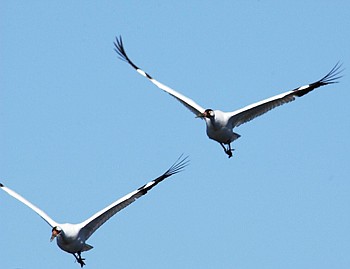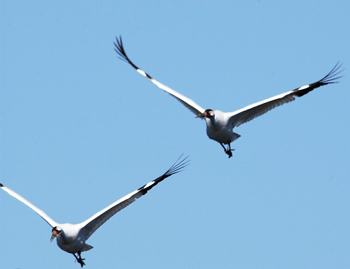U.S. Fish and Wildlife Service agents are investigating the death of a rare and endangered whooping crane in Cherokee County, Ala.
The bird's death, discovered Jan. 28, is the fourth such killing since the first of the year. Three whooping cranes were found dead in South Georgia near Albany in January and later were confirmed to have been shot.
This newest bird, found near Weiss Lake about 90 miles south of Chattanooga, is being examined at the U.S. Fish and Wildlife Services Forensics Laboratory in Oregon, said Special Agent John Rawls.
"The three birds have been confirmed as shootings; this particular bird is still undetermined, but preliminary indications are that it was shot," said Rawls, who is based in Montgomery, Ala.
There are roughly 400 whooping cranes in the wild, according to the Fish and Wildlife Service, and just 100 are on the East Coast. Their numbers have rebounded from an all-time low of just 14 in 1950, but the birds still are endangered and protected by two sets of laws that forbid them from being hunted.
This bird, labeled 12-04 for the order in which it was born in 2004, was hatched in a special repopulation program, then guided south for the winter by a costumed pilot flying an ultralight aircraft, according to a Fish and Wildlife Service news release.
TO HELPA $6,000 reward has been set for information that leads to an arrest and conviction of the person responsible for killing a whooping crane in Cherokee County, Ala. To report information, call 334-285-9600 or e-mail john_rawls@fws.gov. If caught, the guilty party could face a $100,000 fine and a year in jail.
"We know that it was a bird that had paired with a female and had successfully produced offspring," Rawls said. "It was an important male. There was some real promise with this bird."
Rawls said there is little chance of mistaking the birds for any species that are legally allowed to be hunted in the region.
Bird-watchers hold whooping cranes in high regard alongside other rare species such as the bald eagle, said Doug Geren, a Cleveland, Tenn., bird-watcher who follows whooping crane migrations.
"This is just really sad news that another crane has been killed," Geren said. "Cranes are very slow reproducers. They don't reproduce until they are 5 years old, and then they only have two or three eggs and some are killed by predators."

